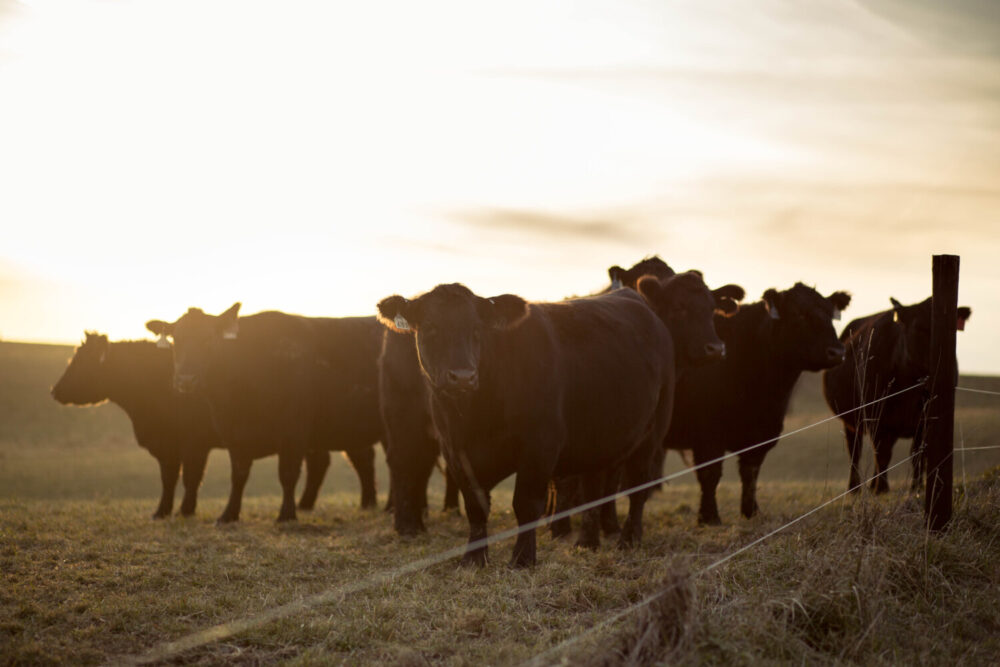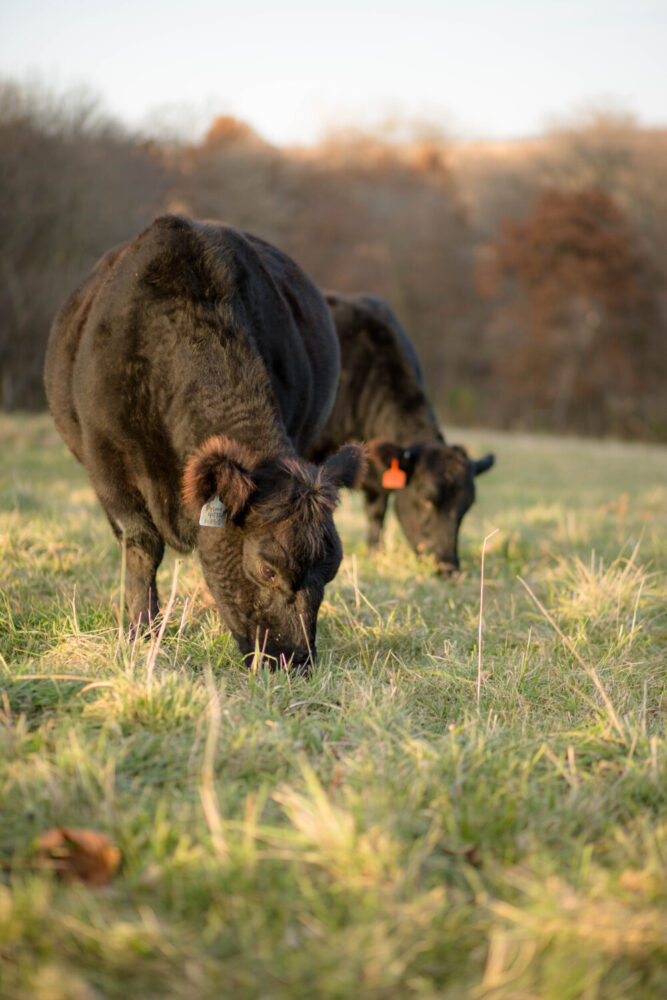
Phenotype vs. Genomic Selection
February 2024
Willie Altenburg has been producing seedstock Simmental bulls and females for decades on his ranch in northern Colorado and selling them in his Colorado Select Sale. From his perch on the sale block, he said he sees bidders and buyers from all types of operations. Ideally, he said, buyers choose their bulls based on their end game.
Altenburg said the needs of a producer with a commercial cowherd who sells at weaning by the pound vary greatly from the producer who retains ownership all the way to the rail. Some producers are looking for a bull to use on heifers, while others want to make changes to the cowherd, like a reduction of the mature cow size. Successful cattle producers, Altenberg said, balance phenotype and genomics.
“We have some guys who study the numbers at home, get the video and pick the ones they think they’ll like, and they come view the bulls and they really like the feet or the muscle of a particular bull,” Altenburg said. “Then they’re able to combine what they’ve learned from the numbers, the video, and viewing them in person to choose the right bull for their program.”
On the historic Wagon Wheel Ranch near Yuma, Colorado, Kenny Rogers has been raising registered Angus cattle offered at their annual production sale. He said cattle producers need a clear objective defined for their cattle prior to making breeding decisions.
“Some want more milk, less milk or more emphasis on carcass,” Rogers said. “Some, believe it or not, look at docility before they look at anything else. As seedstock producers, we’re trying to get the total package, but you can certainly pick a hole in any animal out there. There’s no unicorn to this day that I know about.”

Finding a balance
Despite some buyers spending hours poring over data and videos, Altenburg explained, “Some guys look at them in the sale ring and never look at a piece of paper.” Those producers often depend upon years of experience to select a bull that will fit their program. He said a savvy producer won’t purchase a bull that looks great on paper but lacks soundness or just isn’t physically attractive.
“The good producers have their criteria in mind — weaning weight, retained ownership, maybe they want cows that last, so they look at feet and udders,” he said. “Some want to go look at the cow and don’t you love those guys? They’re the ones you want to spend lots of time with and you’ll enjoy it.”
Trends come and go
The cattle industry has seen an abundance of trends and Altenburg said the age of the producer drives the trends a bit.
“The younger buyers are more astute on EPDs — they just are,” he said. “They’re trained to be. The older generation is probably not that educated toward that, but the younger generations don’t know as much about phenotype. Maybe they haven’t been burned on feet yet or udders yet. Grandpa has to teach them to look at what that bull did last year.”
Some producers emphasize weaning the heaviest calves possible. Really good producers, Rogers said, emphasize weaning the heaviest calves possible plus producing a carcass that the next step in the supply chain will value.
“With my dad’s generation, they looked hard at pounds, and they really ran into a lot of problems concentrating on a single trait,” he explained. “Feet, legs, docility, hard doing … those suffered. We started multi-trait selection decades ago recognizing that we needed a mix that also included calving ease and growth and carcass traits.”
Rogers said in the days when pounds were the name of the game, his dad purchased a bull that was siring calves that boasted a yearling weight of over 1,600 lb (730 kg). When that bull was used on the heifers, he said the results were disastrous.
“We didn’t have any c-sections, but we put chains and pullers on a lot of calves,” he said. “We finally figured out the mistake once we saw enough front legs the size of soup cans. I look back at some of the trends and wonder what the heck we were thinking.”

Learning the ropes
Altenburg said he tries to be a resource for buyers, no matter how experienced they are, by building a relationship and steering them in the right direction based on their needs and goals.
“It’s so much better to know them beforehand and visit their operation and establish a relationship before the sale,” he said. “Some people like to play poker at bull sales. They don’t want you to know how many they want or how much they want to spend and it’s hard watching them choose the wrong bulls for what they said their goals are.”
Altenburg said he has several high-altitude cattle producers who turn to him for bulls and females due to the reputation of Simmental cattle experiencing lower incidences of congestive heart failure, or brisket disease, especially above 6,800 ft (2,100 m). This indicator is expressed as a PAP score, or a Pulmonary Arterial Pressure score.
“I once had a buyer who wanted Simmental bulls to help with brisket disease, but he didn’t look at the low PAP bulls,” he said. “He bought a high PAP bull, and I wouldn’t deliver him. I told him to just think what he could do if he looked at those scores. I took him to lunch, explained it, and left him a different bull.”
Rogers said there is merit in data like EPDs or even DNA testing. However, he said he will fault decisions made purely by looking at what he calls white paper bulls, emphasizing data over all else without looking for an animal that balances all the needs of the operation. With so much data available, especially in the purebred realm, he said it’s a mistake to forget the basics of whether an animal can walk from the feed to the water tank or considering what they look like.
“A white paper bull may look good on paper, but once he gets out there, he might not move very well or perform in reality,” he said. “It has to be part and parcel of the game as a whole. It’s a tool in the toolbox.”
Information noted above was gathered from a third party who was advised his/her experience might be featured in marketing materials. This article contains third-party observations, advice or experiences that do not necessarily reflect the opinions of Vermeer Corporation, its affiliates or its dealers.
Vermeer and the Vermeer logo are trademarks of Vermeer Manufacturing Company in the U.S. and/or other countries.
© 2024 Vermeer Corporation. All Rights Reserved.

